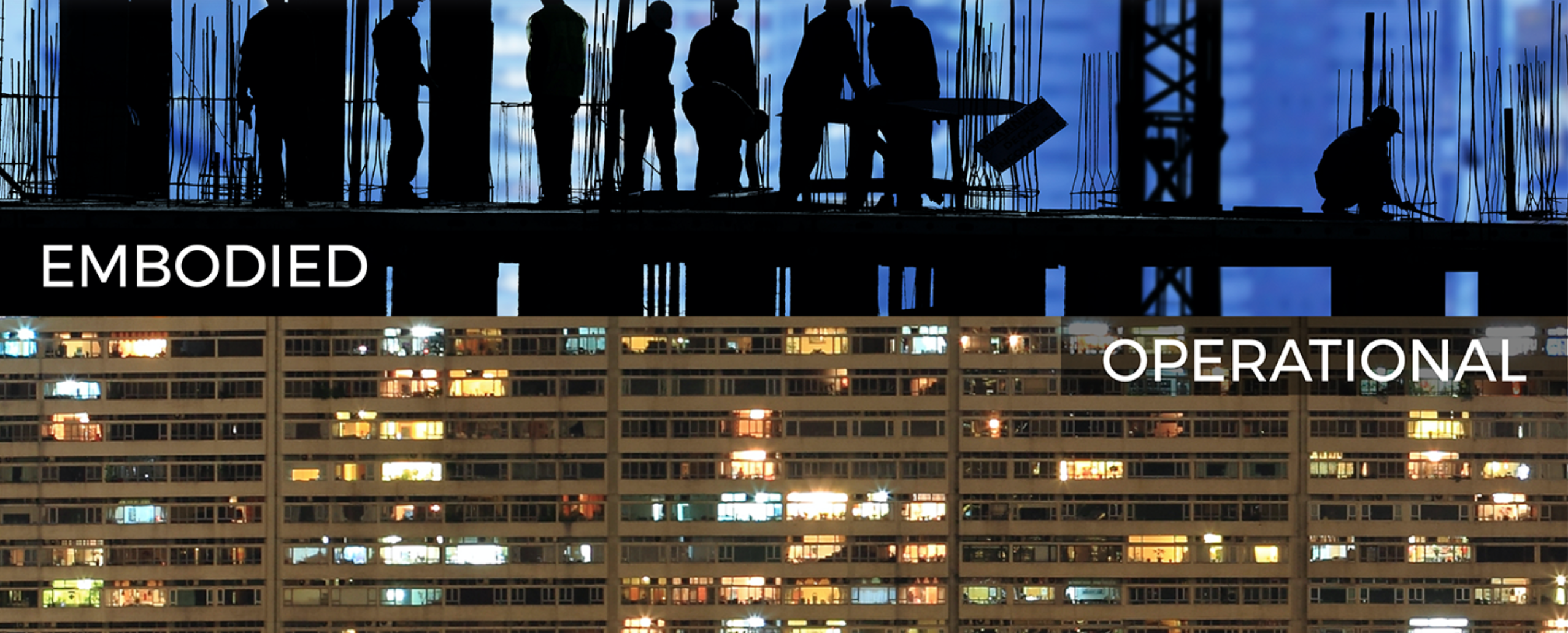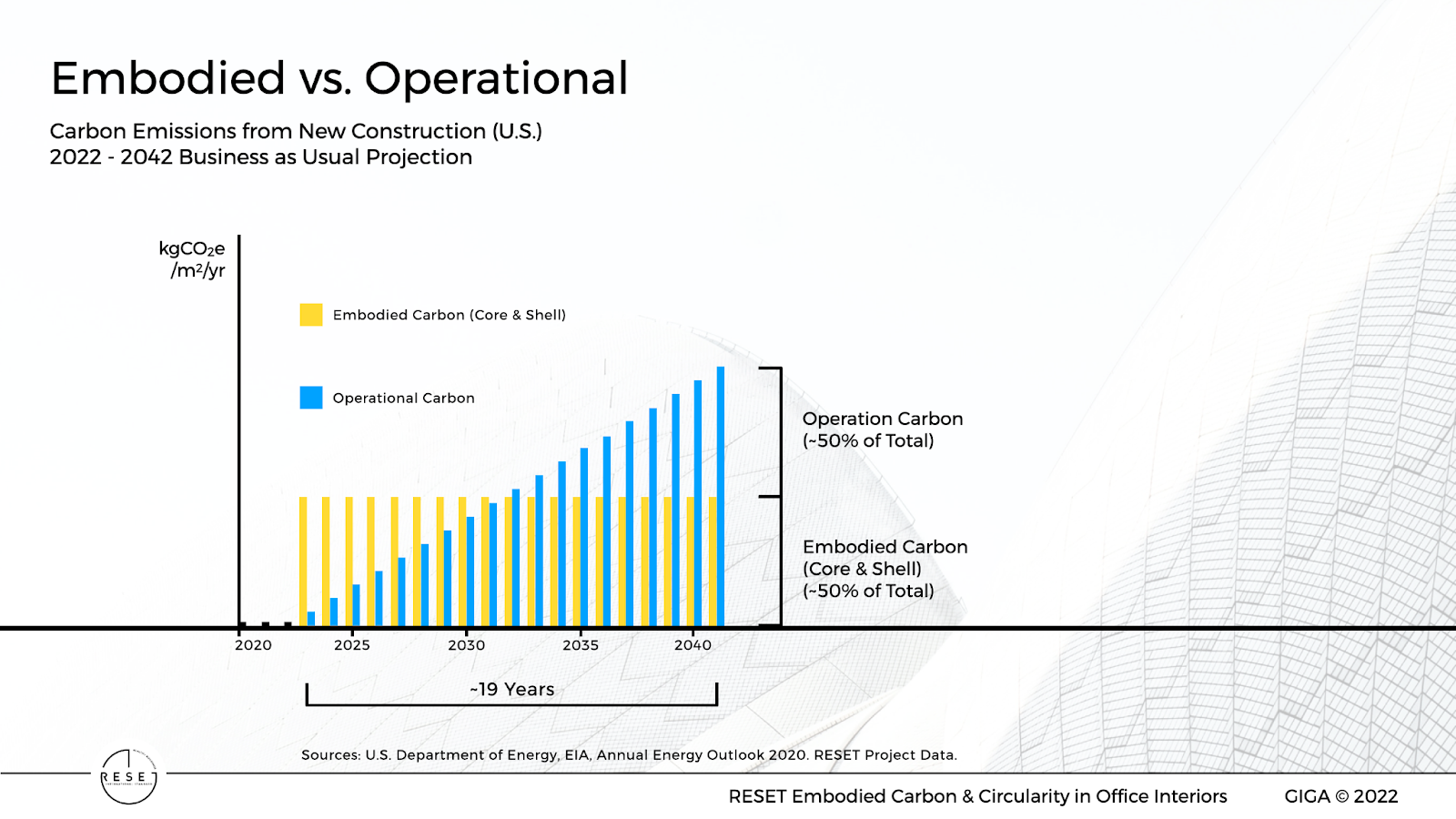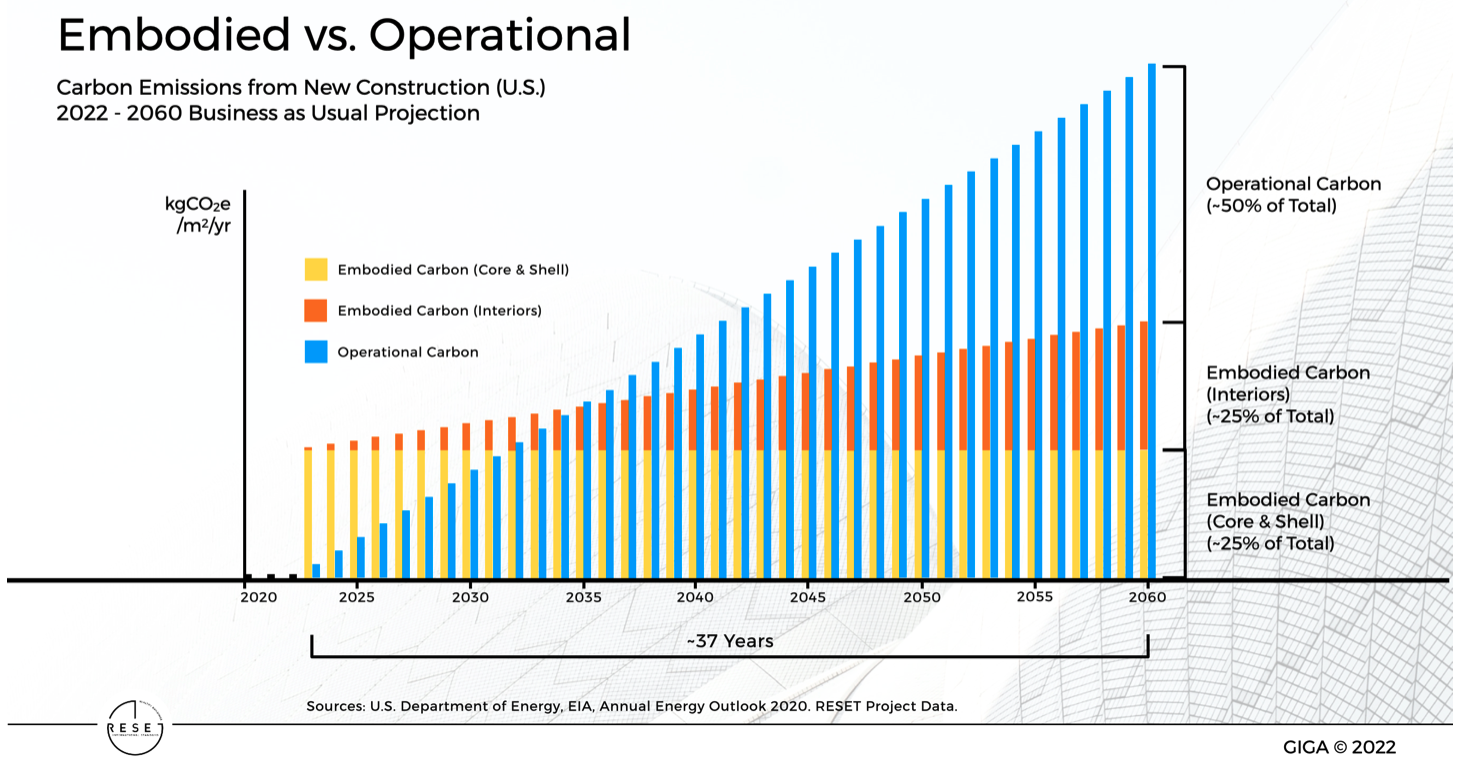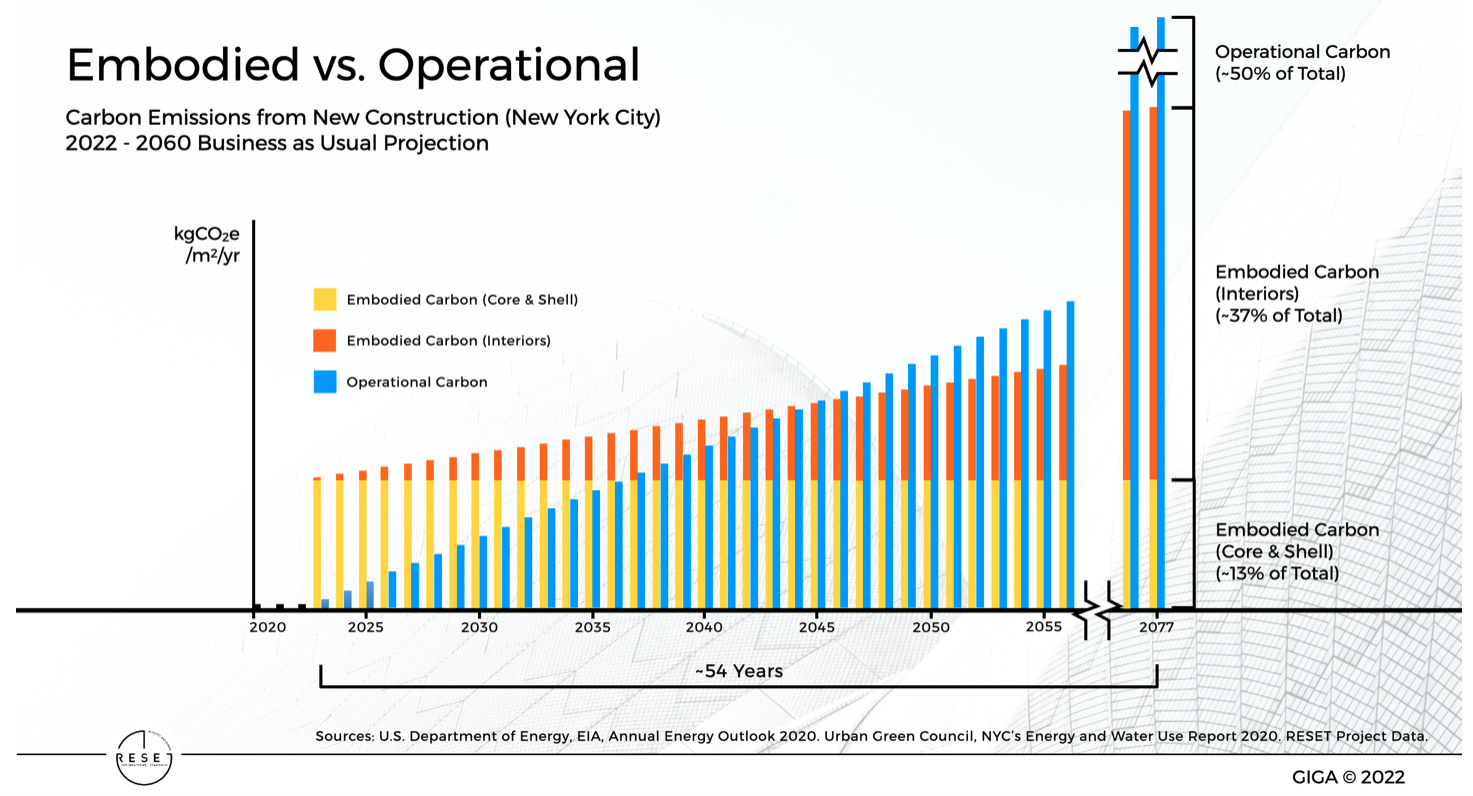Revisiting the Iconic Chart from Architecture 2030

If you’re like us, the first time you saw the Architecture 2030 chart on embodied vs. operational carbon emissions you probably thought, “I’m not sure what this chart is saying, but it looks important. Let me stare at it for a moment and figure it out.”
The chart was and still is important. Since it first appeared, you’ve probably seen it in dozens of presentations on embodied carbon in buildings.
If you still haven’t taken the time to figure it out, it’s quite simple:
Embodied Carbon: The yellow bars represent the carbon emissions from new construction, year on year. The vast majority of these emissions come from the building materials.
Operational Carbon: The blue bars represent the cumulative carbon emissions from using the buildings that are constructed year on year.
It will take about 30 years for total carbon emissions from building operations to catch up with total carbon emissions from new construction.
Between 2020 and 2050, embodied carbon will be responsible for almost half of total new construction emissions.
Although the chart continues to be powerful, new data from RESET certified projects allows to tell a fuller story about embodied carbon.
Embodied Carbon for Core & Shell vs Interiors
Over the life of a building, there are two types of embodied carbon that are equally significant:
Embodied carbon from the construction of core and shell.
Embodied carbon from the construction of interiors.
Whereas embodied carbon from the construction of core and shell barely changes over the life of a building, embodied carbon from the construction of interiors accumulates, much like operational carbon. The distinction is critically important as the topic of embodied carbon has historically been dominated by a focus on core & shell.
To illustrate this, we revisited the iconic Architecture 2030 chart, making several adjustments:
Embodied carbon from interiors is shown separately from core & shell.
An average lifespan of 8.5 years is used for interior fit-out.
The data is displayed on a per square meter per year basis.
The results are specific to commercial offices in the U.S.
This new chart shows that for every square meter of office building constructed in the U.S. it will take about 19 years for carbon emissions from daily operations to catch-up with those from the construction of core & shell.
When the impact from interior fit-out is factored in, the time required for operational emissions to catch up with embodied emissions doubles, stretching to 37 years.
This new chart is also another way of showing that for certain sectors such as commercial offices, the impact from interior construction is more significant than core & shell when properly considered over the life of buildings.
Increased Significance of Embodied Emissions
As stricter codes and regulations are implemented for building operations - limiting energy consumption and carbon emissions - the significance of embodied emissions will continue to rise. They will also be harder to reduce, given the intensity of energy use required by manufacturing and construction.
For example, in a business as usual scenario, it currently takes about 54 years for operational emissions to catch-up to embodied emissions in New York: 17 years longer than the National Average. This difference will continue to increase as New York further decarbonizes its energy grid.
Embodied Carbon for Tenants
The takeaway is that the topic of embodied carbon in construction has largely been the realm of property developers and owners. It will now become the realm of their tenants.
The significance of the issue led RESET to develop a holistic standard quantifying the embodied impact of interiors, inclusive of circularity and health as means to reduce carbon emissions. RESET is currently the world’s only standard to focus on quantifying the broader embodied impact of interiors.
Case Studies Download
For more data and graphs on the above, as well as a case-study that leverages the RESET Standard to reduce embodied carbon emissions up to 81.5%, download our recent report and case study:
| Case Studies | |
|---|---|
| Embodied Carbon and Circularity for Office Interiors - Part 1 | Download |
| Embodied Carbon in Gee Office Interiors - Part 2 | Download |
To learn more, subscribe to our newsletter or follow us on social media at LinkedIn and Twitter.
Originally posted here on October 5, 2022.




